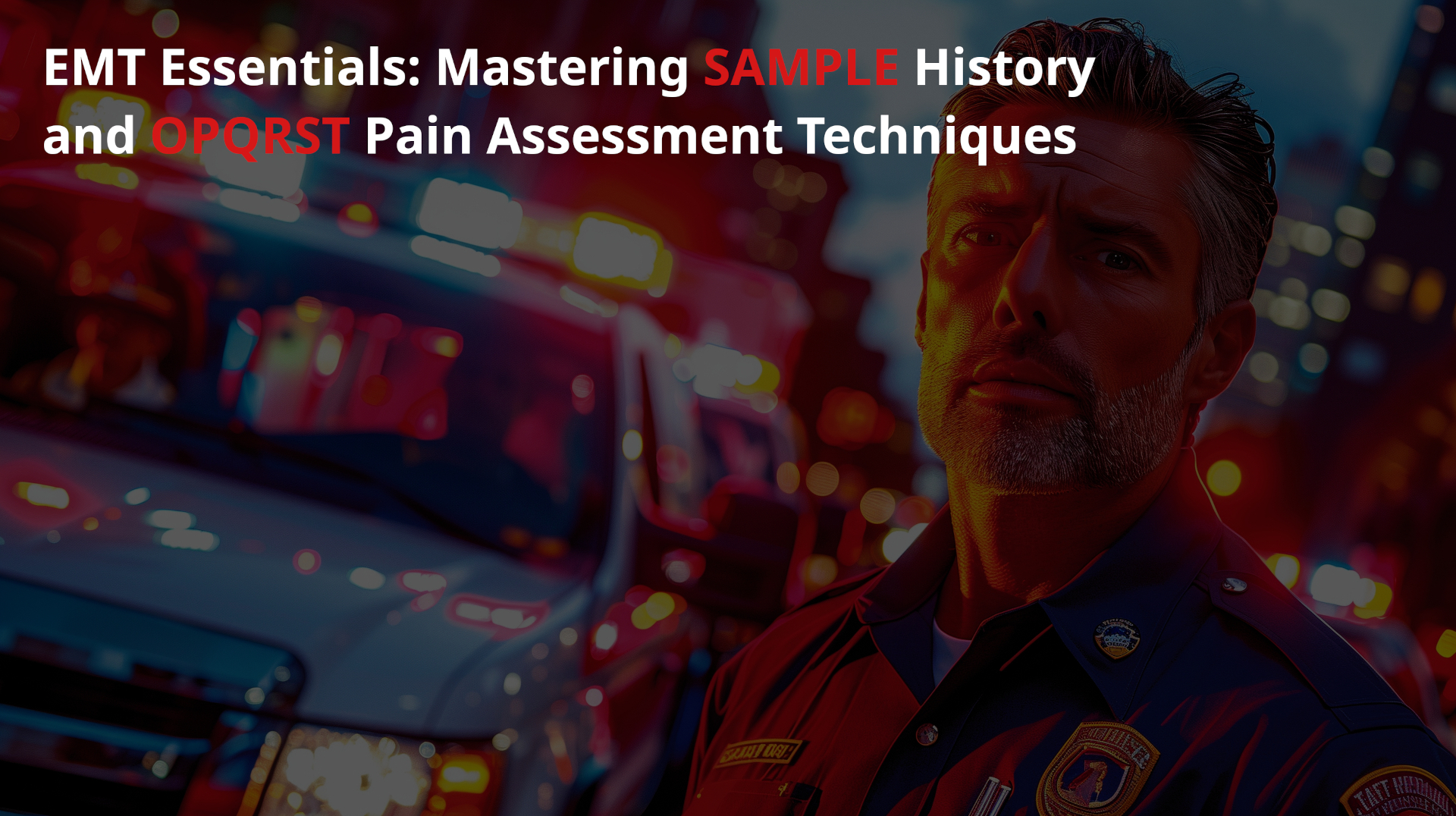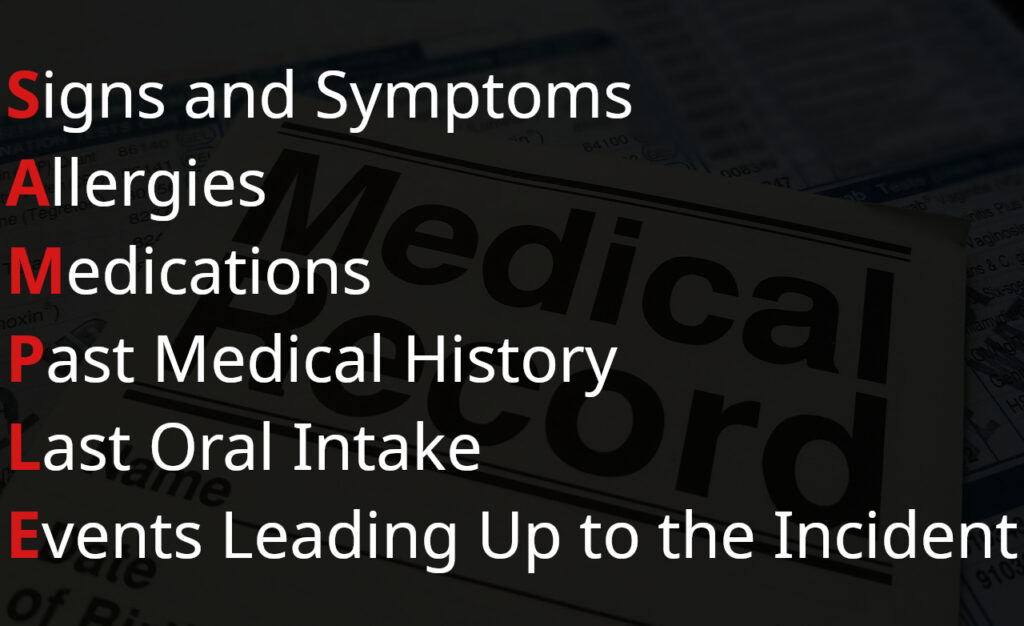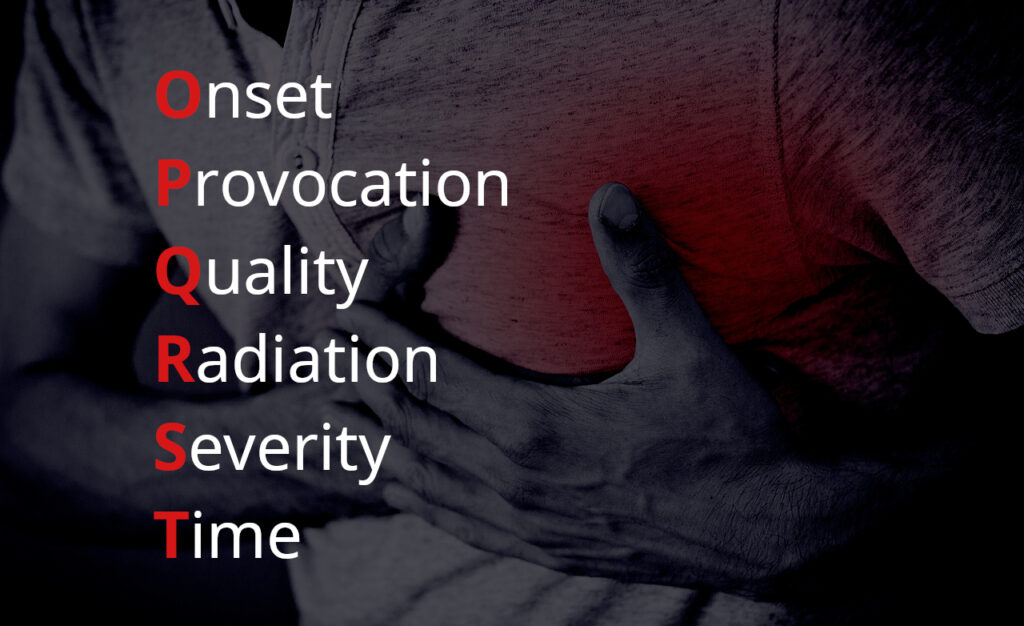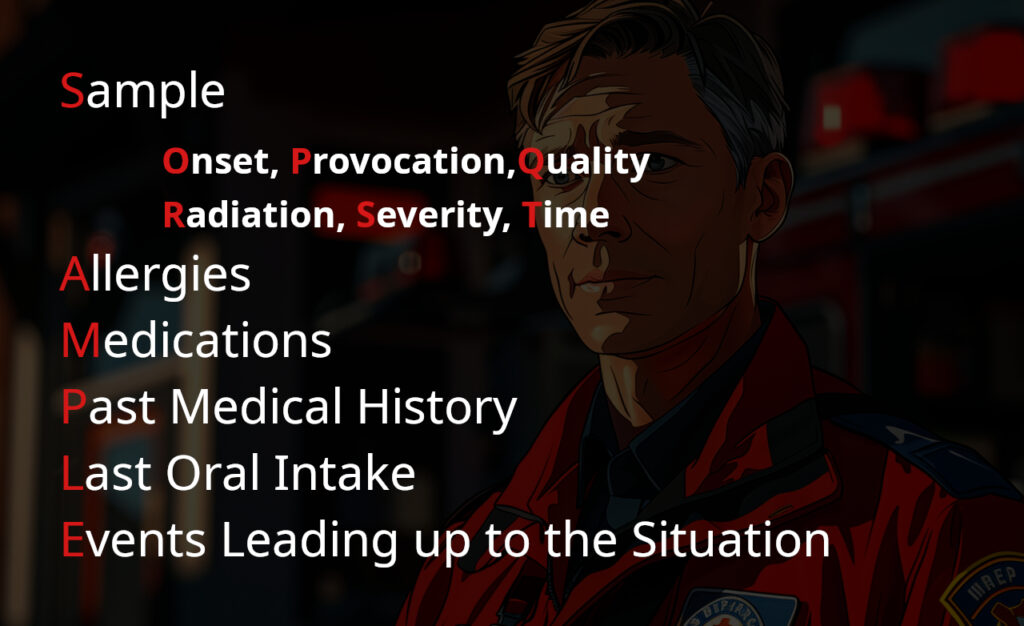

In the fast-paced and critical world of emergency medical services, EMTs are often the first healthcare professionals to interact with patients in distress. The initial assessment of a patient can be crucial in determining the course of treatment and can significantly impact outcomes. This is where the SAMPLE history and OPQRST pain assessment come into play, serving as essential tools in an EMT’s diagnostic arsenal.
The SAMPLE history is a mnemonic acronym used by EMTs to remember the key questions they need to ask patients to gather crucial information. It stands for signs or Symptoms, Allergies, Medications, Past medical history, Last oral intake, and Events leading up to the present illness or injury. This methodical approach ensures that no critical aspect of the patient’s history is overlooked, providing a comprehensive understanding of their medical background and current condition.
Complementing the SAMPLE history is the OPQRST pain assessment technique. This mnemonic helps EMTs evaluate a patient’s pain and discomfort through a series of targeted questions. OPQRST stands for Onset, Provocation/Palliation, Quality, Region/Radiation, Severity, and Time. By understanding the nature and characteristics of the patient’s pain, EMTs can make more informed decisions about immediate care and potential transport needs.
In this article, we delve into the nuances of both of these techniques, exploring their significance, how to effectively implement them in various emergency scenarios, and the common pitfalls to avoid. As an EMT, mastering the SAMPLE history and OPQRST pain assessment can enhance your diagnostic capabilities, improve patient care, and potentially save lives in critical situations.

When it comes to emergency medical care, every second counts. EMTs are trained to quickly assess the situation and gather essential information to make lifesaving decisions. One of the primary tools for this critical task is the SAMPLE history, a mnemonic that helps EMTs systematically collect vital patient information during the initial assessment. Understanding each component of SAMPLE is key to its effective application in the field.
In the hands of a skilled EMT, the SAMPLE history is a powerful tool for rapidly assessing a patient’s condition and determining the most appropriate course of action. By methodically working through each element of SAMPLE, EMTs can gather comprehensive information that is vital for effective patient care.

For emergency medical technicians, accurately assessing a patient’s pain is a critical component of the initial evaluation process. The OPQRST method offers a structured approach to pain assessment, enabling EMTs to gain vital insights into the patient’s condition. This method is not only about assessing pain but also about understanding the story behind it, which can often lead to more accurate diagnoses and effective treatment plans.
In emergency medical care, the OPQRST method is not just a tool; it’s a crucial part of the patient assessment process that guides EMTs in making informed decisions about patient care. It underscores the importance of a thorough, empathetic approach to patient interaction, ensuring that every aspect of the patient’s pain experience is understood and addressed.
EMTs frequently encounter a wide range of medical emergencies, each presenting unique challenges and requiring quick, informed decision-making. The application of SAMPLE history and OPQRST pain assessment techniques plays a pivotal role in these situations. By exploring real-world case studies, we can better understand the practical applications of these methods and their impact on patient outcomes.
These case studies demonstrate the versatility and importance of the SAMPLE and OPQRST methods in various emergency scenarios. For EMTs, adapting these techniques to the specifics of each situation is key to providing optimal patient care and making crucial treatment decisions under pressure.
In emergency medical services, the difference between a successful and a less effective intervention often lies in the attention to detail and adherence to best practices. While the SAMPLE history and OPQRST assessment techniques are powerful, their efficacy depends on how well they are implemented. Let’s explore some best practices and common pitfalls associated with these methods.
By adhering to these best practices and avoiding common pitfalls, EMTs can significantly enhance the quality of patient care they provide. It’s not just about following a procedure; it’s about integrating these methods into a holistic approach to patient assessment, ensuring that every patient receives the best possible care in emergency situations.

SAMPLE history and OPQRST are designed to be used together. How I teach my EMT students to utilize both is relatively simple. Think of the mnemonics as part of the same package.
When taking your sample history, start with the S. Part of notating the patient’s signs and symptoms is OPQRST. Onset, provocation, quality, radiation, severity, and time are all signs and symptoms of a medical issue.
After obtaining your OPQRST follow along with the rest of the AMPLE history. This is how I remember it in the field:
S( OPQRST ).A.M.P.L.E.
Hopefully this little hint will help you remember these techniques come test day or out in the field.
In the realm of emergency medical services, the capacity to swiftly and accurately assess a patient’s condition is invaluable. The SAMPLE history and OPQRST pain assessment methods stand as cornerstones in this process, offering structured, comprehensive frameworks for EMTs to gather critical information. As we’ve explored in this article, these methodologies are more than just acronyms; they are essential tools that, when used effectively, can significantly improve patient outcomes.
The real-world applications of SAMPLE and OPQRST, as demonstrated through various case studies, highlight their practicality and effectiveness in diverse emergency scenarios. From roadside accidents to public event emergencies, these methods provide EMTs with the insights necessary to make informed decisions under pressure. Furthermore, understanding the best practices and common pitfalls associated with these techniques is crucial for EMTs to continually refine their skills and enhance the quality of care provided.
The mastery of SAMPLE history and OPQRST pain assessment is a testament to the dedication and proficiency of EMTs in their relentless pursuit of excellence in patient care. As frontline responders, their role is not only critical but also heroic, and these tools serve to augment their ability to save lives and provide comfort in moments of crisis. For aspiring and veteran EMTs alike, the continuous honing of these skills is an ongoing journey towards achieving the highest standards in emergency medical services.